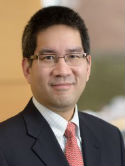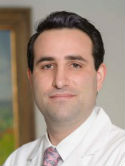| Abstract: |
Objective: Early-stage oral cavity squamous cell carcinoma (OCSCC) represents a heterogeneous group of patients, and locoregional recurrence rates are as high as 25% with surgery alone. Radiotherapy (RT) is typically reserved as part of salvage multimodality therapy after salvage surgery because it is generally thought that there is no significant detriment to salvage therapy. Our aim was to examine outcomes for recurrent OCSCC treated with salvage surgery and radiation and compare them to outcomes for patients treated with adjuvant postoperative RT upfront. Methods: We identified 425 patients with OCSCC treated with postoperative RT at our institution. The 5-year rates of local failure, locoregional failure (LRF), survival, and distant metastasis (DM) were the main outcome measures. We performed a landmark analysis and examined the same outcomes in the adjuvant versus salvage cohorts using Cox proportional hazards and Fine-Gray competing risk method. Results: The adjuvant cohort had higher tumor (T) (P < 0.0001) and nodal (N) (P < 0.0001) stage than the salvage cohort's stage at initial presentation. On multivariate analysis, a strategy of salvage RT experienced poorer overall survival (OS) compared to upfront adjuvant RT (hazard ratio [HR] 1.84; 95% confidence interval [CI], 1.26–2.70; P = 0.002). Moreover, salvage surgery followed by RT patients experienced increasing risk of LRF (HR 1.56; 95% CI, 1.18–2.06; P = 0.002) and (DM) (HR 1.53; 95% CI, 1.08–2.17; P = 0.02) on multivariate analysis. Additional analysis was performed excluding salvage cohort with advanced disease at initial presentation (T3–T4 and N2). Salvage RT treatment selection for early-stage OCSCC continued to experience significantly poorer OS as compared to adjuvant RT (HR 1.48; 95% CI, 1.002–2.19; P = 0.049). Conclusion: Early-stage OCSCC patients who are observed and experienced recurrence requiring salvage therapy (surgery and RT) have worse oncologic outcomes than locally advanced patients receiving upfront adjuvant RT. Prospective randomized studies are needed to identify high-risk subset of early-stage OCSCC comparing adjuvant RT versus observation, followed by salvage surgery and RT at recurrence. Level of Evidence: 4. Laryngoscope, 2539–2545, 2018. © 2018 The American Laryngological, Rhinological and Otological Society, Inc. |















